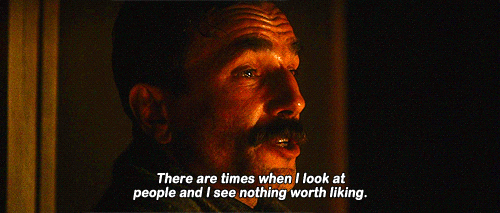What do you think?
Rate this book


422 pages, Paperback
First published March 1, 2016
Whatever our way out of this mess, one thing is certain. This degree of inequality, this withdrawal of opportunity, this cold denial of basic needs, this endorsement of pointless suffering-by no American value is this situation justified. No moral code or ethical principle, no piece of scripture or holy teaching, can be summoned to defend what we have allowed our country to become.







Families have watched their incomes stagnate, or even fall, while their housing costs have soared. Today, the majority of poor renting families in America spend over half of their income on housing, and at least one in four dedicates 70 percent to paying the rent and keeping the lights on. Millions of Americans are evicted every year because they can't make rent.
In Milwaukee's poorest black neighborhoods, eviction had become commonplace—especially for women. In those neighborhoods, 1 female renter in 17 was evicted through the court system each year, which was twice as often as men from those neighborhoods and nine times as often as women from the city's poorest white areas. Women from black neighborhoods made up 9 percent of Milwaukee's population and 30 percent of its evicted tenants.Among the individuals interviewed extensively by the author was an entrepreneurial African American woman who is the owner of numerous rental units and is one of the landlords issuing eviction orders. By including the story of a landlord in the book the author has included the other side of the story. Landlords need to maximize the amount of income from their rental units in order pay their bank loans. But one of the points of the book is that there is plenty of money to be made in renting to impoverished tenants. Maintenance and upkeep doesn't cost much because poor people can't complain for fear of eviction.
If incarceration had come to define the lives of men from impoverished black neighborhoods, eviction was shaping the lives of women. Poor black men were locked up. Poor black women were locked out. [underline emphasis is mine]
Tenants who fell behind either had to accept unpleasant, degrading, and sometimes dangerous housing conditions or be evicted.Evictions have negative consequences for whole neighborhoods, including those remaining who have not been evicted. Evictions destabilize neighborhoods. The more people come and go, the less chance there is for cohesion and neighborhoods become less safe. The effects are enduring, as measured by incidents like hunger or lost utilities.
The year after eviction, families experience 20 percent higher levels of material hardships than similar families who were not evicted.The availability of affordable rental units has not kept pace with the rise in demand. In 1970, the US had nearly a million more affordable units than poor households, according to the Center on Budget and Policy Priorities. Two decades later, the situation had reversed—there were five million more poor households than affordable units.
Evictions would plummet and become rare occurrences. Homelessness would almost disappear. Families would immediately feel the income gains and be able to buy enough food, invest in themselves and their children through schooling or job training, and start modest savings.Regarding the present situation in the United States, the author has the following comment:
No moral code or ethical principle, no piece of scripture or holy teaching, can be summoned to defend what we have allowed our country to become.UPDATE
Eviction is a cause, not just a condition, of poverty.
[Crystal] had been born prematurely on a spring day in 1990 shortly after her pregnant mother was stabbed eleven times in the back during a robbery—the attack had induced labor. Both mother and daughter survived. It was not the first time Crystal’s mother had been stabbed. For as far back as she could remember, Crystal’s father had beat her mother. He smoked crack and so did her mother and so did her mother’s mother.